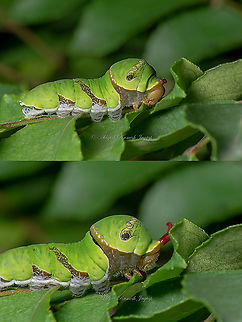
Appearance
Jet black butterfly with row of white spots along the middle part of hindwing. 90–100 mm.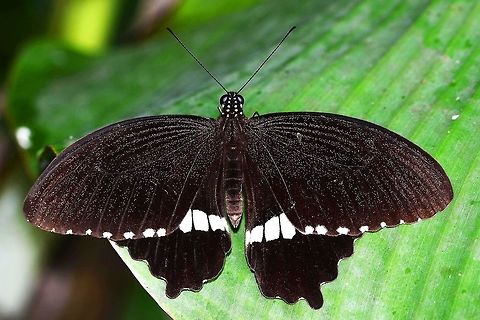
Behavior
The females perch on an exposed branch with wings open or closed. They are courted by the males who approach from behind and slowly and elegantly settle into position.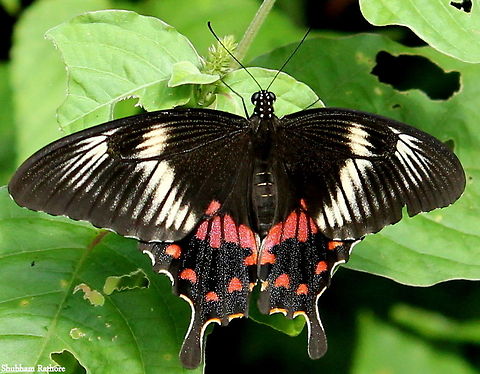
Habitat
The common Mormon prefers lightly wooded country, but is present everywhere and high up into the hills. It is a regular visitor to gardens, being especially abundant in orchards of its food plants—oranges and limes. It is most common in the monsoon and post-monsoon months.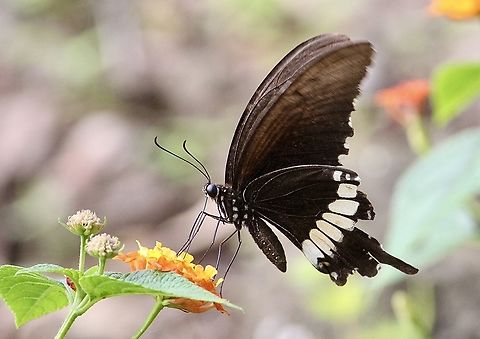
Reproduction
The eggs are laid singly on top of the leaves. They are round and yellow to light-yellow in colour.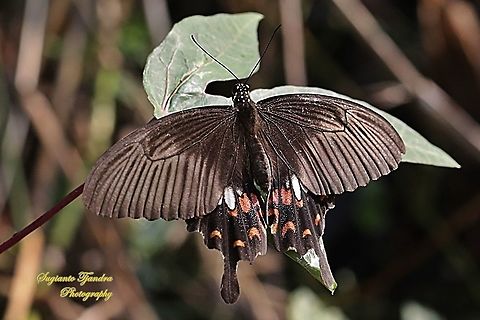
Food
The larvae breed on various species of family Rutaceae including:⤷ "Aegle marmelos" or bael
⤷ "Atalantia racemosa"
⤷ "Citrus" spp.
⤷ "Glycosmis arborea"
⤷ "Murraya koenigii" – curry leaf
⤷ "Murraya paniculata"
References:
Some text fragments are auto parsed from Wikipedia.
